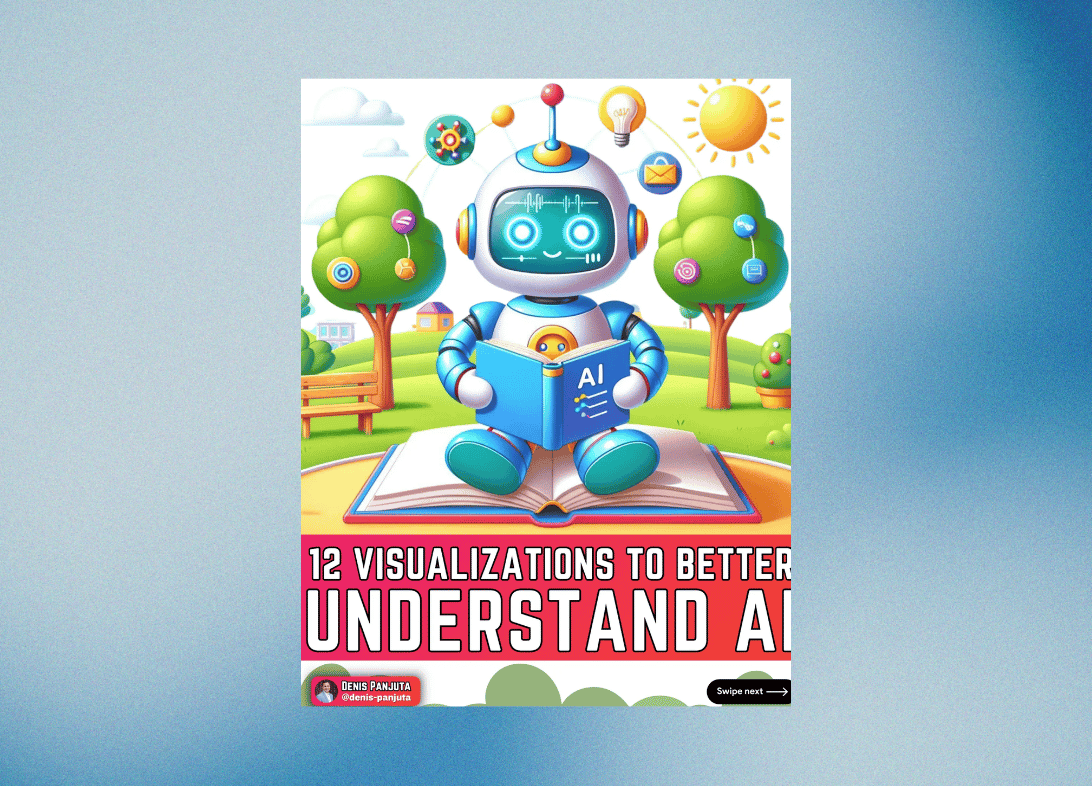🖼️ 12 Visualizations To Understand AI
Learn how AI works with this comprehensive tutorial! Discover types of AI like machine learning, neural networks, NLP, and explore real-world applications in healthcare, e-commerce, and more.
🔗 Some useful links to bookmark ⤵️
Want to reach out to with our editors? Click below to DM our staff 💬
Know a friend that would use this tutorial?
Refer 3 friends and get 1-month free subscription
✍️ This week’s review:
🖼️12 Visualizations To Better Understand AI
TL;DR:
This tutorial guides you on how artificial intelligence (AI) works, including its different types, applications, and the tools and ethics surrounding it. It’s designed to help you simply understand AI, focusing on visualizations and real-world examples.
What you can do with this tutorial:
By learning from this tutorial, you can:
Understand what AI is and how it mimics human behavior.
Explore the various types of AI like machine learning, neural networks, and natural language processing.
Discover practical applications of AI such as in healthcare, e-commerce, and education.
Learn about ethical considerations in AI and how to prevent bias.
Gain knowledge of important tools and libraries used in AI development.
Summary of the tutorial:
Introduction to AI:
AI is technology that allows computers to behave like humans and learn from experiences.
Examples include chatbots, virtual assistants, and autonomous vehicles.
Types of AI Technologies:
Machine Learning (ML): Computers learn patterns from data. Examples: fraud detection, spam filtering.
Neural Networks: Inspired by the human brain, these help in complex tasks like image recognition.)
Natural Language Processing (NLP): Machines understand and generate human language. Examples: translation, sentiment analysis.
Applications of AI:
Healthcare: AI helps in disease detection and patient care.
E-commerce: AI personalizes shopping experiences and combats fraud.
Transportation: AI optimizes traffic and enhances safety with self-driving cars.
AI Workflow:
Involves data collection, cleaning, feature engineering, model training, and deployment.
Ethics in AI:
Discusses bias, data privacy, and the moral implications of AI.
Important Tools and Libraries:
Tools like TensorFlow, Python, and Pytorch are mentioned as key to building AI systems.
Conclusion:
This tutorial is a comprehensive guide to understanding artificial intelligence. It covers essential concepts, applications, and ethical considerations, making it a valuable resource for anyone looking to delve into the world of AI. You can apply these teachings in various fields like technology, healthcare, and even marketing by leveraging AI tools to improve processes.
About the author:
Denis Panjuta is an expert in AI and technology, known for his engaging tutorials that simplify complex subjects. He specializes in making advanced technology accessible to everyone, focusing on practical applications and ethical considerations.


